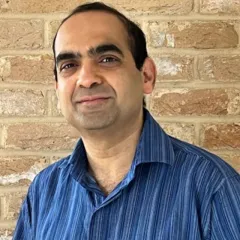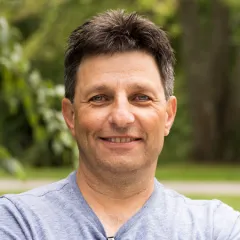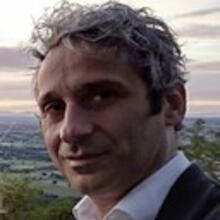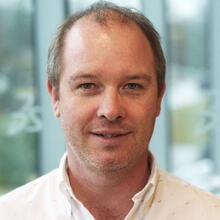

Dr Emma KOWALCZUK has been with Jaguar Land Rover since 2015 and is responsible for leading Electromagnetic (EM) CAE capability development in the company. She is experienced in applying EM simulation techniques to investigate automotive Electromagnetic compatibility (EMC) and antenna installation including broadcast, cellular and passive entry passive start antenna systems. She has a particular interest in virtual test drive for cellular and V2X antennas to assess their coverage and optimise customer connectivity.
She received her M.Eng and Ph.D in Electrical Engineering from Loughborough University, where she researched photoconductive microwave switches for use in reconfigurable RF applications. She also worked as an electromagnetic application engineer for CST, presenting and publishing the benefits of EM Simulation for a wide range of industrial and academic areas.
EM Simulation and the Connected Car
Modern luxury vehicles are connected, autonomous and electrified - to enable these key features, cars rely on wireless communication and antennas. Understanding the best design and placement of antennas and cables inside a car is a challenge – but Computational Electromagnetics (CEM) can be used to get the design right first time. An overview of how EM simulation is used at Jaguar Land Rover will be presented.
The number of antennas is ever increasing to meet customer demand for features such as software over the air, remote diagnostics, vehicle to vehicle (V2V) communication and customer infotainment including streaming of HD media. EM simulation correlation will be presented for an installed cellular antenna and challenges that face us in the future with the adoption of vehicle to everything (V2X) will also be discussed.
Autonomous vehicles also require multiple inputs from radar arrays, at 77GHz the installed performance of an array is electrically very large. Both full-wave time domain and asymptotic methods can be used to tackle the challenging vehicle environment to calculate angular error and ghost target detection to support moving towards ADAS level 3 and above. Lastly a study around electrification and Electromagnetic Compatibility (EMC) implications will be highlighted –Simulia CST Studio Suite can be used to improve battery lid design and can help tackle the complexity of cable simulations in a time scale that can provide solutions on vehicle programme delivery.


Prof. Vikram DESHPANDE joined the faculty of Engineering at the University of Cambridge as a lecturer in 2001 and was promoted to a professorship in Materials Engineering in 2010. He has written in excess of 280 journal articles in experimental and theoretical solid mechanics. He serves on the editorial boards of a number of journals in mechanics and biomechanics including the Journal of the Mechanics and Physics of Solids, Modelling and Simulation in Materials Science and Engineering, and the Proceedings of the Royal Society, London. He has been awarded numerous medals including the 2020 Rodney Hill Prize in Solid Mechanics, the 2022 William Prager Medal, the 2022 ASME Koiter Medal, and elected Fellow of the Royal Society, London.
Failure of all solid-state Li-ion batteries
Solid-state batteries comprising a ceramic electrolyte and Li metal anode have the potential to deliver enhanced safety along with higher specific energies compared to liquid electrolyte Li-ion batteries. However, stiff, and strong ceramic electrolytes can suffer short circuits resulting from the penetration of Li filaments through the ceramic at charging currents above a critical current density. This is remarkable since the yield strength of Li is on the order of a few MPa while the ceramic electrolytes have strengths of many 100s of MPa and moduli in the GPa range. The failure of these Li-ion cells occurs via two interconnected processes: (i) formation of voids at the Li electrode/electrolyte interface and (ii) growth of Li filaments, that emanate from the vicinity of these voids, into the electrolyte. We shall present coupled electrochemical-mechanical variational principles to understand how the electrochemistry of these cells drives mechanical failure. Our focus is on developing an understanding of how well-established ideas such as Butler-Volmer kinetics need to be modified in the context of these solid-state batteries and associated numerical techniques. The numerical solution of the variational principles provides insights into experimental observations, but numerous uncertainties remain with regards to the microscale properties of the Li and solid electrolytes as well as the mechanisms coupling mechanical deformations and electrochemistry.

Biography:
Mark has been with SIMULIA for over 30 years. Contributing in a variety of sales and technical management roles, he currently leads a global technical sales group supporting advanced applications. He has degrees in structural engineering from Brown University and the University of California, Berkeley.
Title:
SIMULIA Brand Update
Abstract:
Simulation from the SIMULIA brand is absolutely essential to the vision and ambition of Dassault Systèmes. Simulation is a key driver to address the present and future needs of analysts, designers, producers, and consumers. Simulation not only powers product design improvement and cost reduction, but also innovation and sustainability. Hear about the latest in thinking from our brand executive team including recent trends, focus topics, positioning, and ambition.


Biography:
Victor earned his PhD from Duke University in 1996 in the area of computational mechanics. He then joined Abaqus R&D development—now Dassault Systèmes Simulia Corp. Today Victor is R&D Technology Senior Director and leads the following initiatives: battery cell engineering, additive manufacturing simulation, micro-mechanics based multiscale materials, particle methods for extreme deformation, oil & gas multiphysics formulations, realistic human simulation capabilities and co-simulation-based multi-physics modeling.
Title:
Batteries and Electric Drives: Multiphysics-Multiscale-Driven Design
Abstract:
An overview of the Dassault Systèmes battery modeling capabilities from atoms to system. Focus in this presentation is placed on 3D modeling aspects from parametrized designs to engineering KPIs: a) 3D Cell engineering including thermo-electrochemistry in charge/discharge applications and associated swelling, short circuit and thermal runaway; and b) Module/Pack Engineering focusing on durability, thermal management, and safety applications. The 3DEXPERIENCE platform can be used to facilitate collaboration across entire organizations and functions. In this example we will demonstrate how the 3DEXPERIENCE platform can be used to facilitate the design an e-drive motor from requirements and test planning to conceptual design, and all the way to detailed design and performance analysis.


In order to enable faster, cheaper and more reliable testing at all scales, digital continuity to link physical testing and virtual testing is essential. The data driven platform aims to provide an easy to access collaborative environment for testing teams and internal customers alike. The platform is built on 3DExperience, using the concepts of single point of access to enable a digital thread to link test pyramids, design data, sensor locations, physical test data, virtual test data and reporting data.
A key aspect of this is the automated link between the physical test data repository and the simulation data created by Abaqus, since these data types are often not immediately comparable without manual processing. 3DEXPERIENCE is used to help connect these data types together and manage the processing and storage of the data so that it can be consumed in a meaningful way.
Test Engineer working for Airbus at the Aerospace Integrated Research and Technology Centre in Bristol, and a Product Owner of the Smarter Testing Data Driven Platform. Currently focussed on the Wing of Tomorrow R&T programme, and how to integrate the digital continuity benefits of Data Driven Platform to enable improved testing processes.


Joe graduated from Cambridge University and gained a PhD from Imperial College before joining Jaguar Cars as an aerodynamicist in 1998. Joe was responsible for the aerodynamic development of a number of Jaguar vehicles, using physical tests methods and CFD and eventually became the Technical Specialist for Aerodynamics at JLR. Joe then joined Exa Corporation in 2005, as their first UK employee, in order to focus exclusively on CFD with the PowerFLOW toolset.
At Exa Joe was heavily involved in the development and deployment of the PowerFLOW toolset for automotive and motorsport across the world. In 2017 Exa was acquired by Dassault Systèmes, as part of their SIMULIA Brand. Joe now manages a team dedicated to delivering automated simulation & optimization process to SIMULIA customers worldwide.


Chris is the Senior Director of the SIMULIA R&D Structural Simulation department at Dassault Systèmes, which includes the responsibility for R&D activities related to strategy, product management and product development for structural simulation applications and solver technology.
Chris has over 20 years of simulation-related experience in computational fluids and computational solid mechanics and has held a wide range of technical and leadership positions in Product Development, Strategy and Product Management since joining Dassault Systèmes in the late 90s (HKS, Inc. at the time). After several years as a development engineer focused on core solver development, Chris expanded his activities to include structural modeling and results processing and led the development of our portfolio of Abaqus-based solutions on the Dassault Systèmes 3DEXPERIENCE Platform. Since 2016, Chris has led the overall Structures Simulation SIMULIA R&D organization responsible for development of structural simulation solutions and technology.
He has Masters of Science and Doctoral degrees in Applied Mechanics and Mechanical Engineering.
